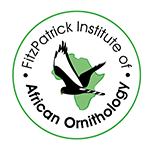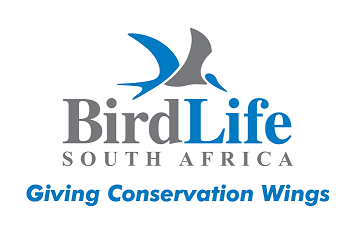Secretarybird (Sagittarius serpentarius)
CAR summary data
Habitat and noted behaviour
Sightings per Kilometre
Please note: The below charts indicate the sightings of individuals along routes where the species has occured, and NOT across all routes surveyed through the CAR project.
Regional Status

IUCN Data (Global)
IUCN 2024. IUCN Red List of Threatened Species. Version 2024-1 (www)Assessment year: 2020
Assessment Citation
BirdLife International 2020. Sagittarius serpentarius. The IUCN Red List of Threatened Species 2020: e.T22696221A173647556. Accessed on 22 December 2025.Geographic range:
Sagittarius serpentarius occurs in sub-Saharan Africa, from southern Mauritania, Senegal, The Gambia and northern Guinea eastwards, north of the forest zone, through southern Mali, Burkina Faso, Ghana, Togo, Benin, southern areas of Niger, Chad, Sudan, South Sudan and northern parts of Nigeria, Cameroon and the Central African Republic, to Ethiopia and north-western Somalia, and south through eastern areas of the Democratic Republic of Congo, Uganda, Kenya and Tanzania, to southern Africa, including Angola, Zambia, Malawi, Mozambique, Lesotho, Botswana, Zimbabwe, Namibia, Eswatini and South Africa. It is variably described as common to rare (only 10 pairs or less in Waza-Logone west, Cameroon [J. Brouwer in litt. 2012]) and localised, and is sedentary in some parts of its range and nomadic in others (Ferguson-Lees and Christie 2001).Habitats:
The species inhabits open landscapes, ranging from open plains and grasslands, to lightly wooded savanna, but is also found in agricultural areas and sub-desert (Ferguson-Lees and Christie 2001), with up to 50% of recorded individuals in the Fynbos biome in winter being found in transformed environments (Hofmeyr et al. 2014). In Kruger National Park, South Africa, reports declined to zero in areas of >20% wood cover (Loftie-Eaton, 2017). It ranges from sea-level to 3,000 m. While it is nomadic, birds living in the moist grassland biome are less likely to be nomadic, but will will travel on average 20-30 km per day while foraging (Kemp & Kemp, 1977; Whitecross et al. 2019).Breeding occurs throughout the year and the species typically nests in a flat-topped Acacia or other thorny tree, where it constructs a flattened stick structure (Ferguson-Lees and Christie 2001). In Kenya, breeding attempts were observed to be disturbed by long droughts and unfavourable weather conditions (B. Amakobe, in litt. 2020). Juveniles can move a long way after leaving their nest site, but will return to their natal area (Retief and Smit-Robinson 2014; Whitecross et al. 2019). Juvenile males travel further than females, but returned closer to the nest site. Natal home ranges average 1.21 ± 0.34 km2 around the nest, and fledglings travel in an average 2.62 ± 0.37 km straight-line distance from the nest (Whitecross et al. 2019). A 2 year old male was also recorded to have successfully raised two chicks in South Africa (Whitecross et al. 2017). A variety of prey is consumed, with insects forming 86% of the diet (Whitecross et al. 2019). Rodents, other mammals, lizards, snakes, eggs, young birds and amphibians also form part of the diet (Kemp and Kemp 1977; Ferguson-Lees and Christie 2001).
Population:
Although the species occurs across a vast range, surveyed densities suggest that the total population size does not exceed a five-figure number.Threats:
Although the species may benefit from deforestation, such positive effects may be outweighed by the negative impacts of spreading cultivation and urbanisation (Ferguson-Lees and Christie 2001). The excessive burning of grasslands may suppress populations of prey species, whilst the intensive grazing of livestock is also probably degrading otherwise suitable habitat (Baker et al. 2011). The Grassland Biome in South Africa is threatened by the expansion of woody vegetation, which would translate to direct habitat loss and a possible reduction in foraging efficacy (Colyn et al., 2020, in review). In Kenya, suitable habitat is being converted to other land uses, particularly for commercial purposes (B. Amakobe in litt. 2020). Disturbance by humans, probably most often herders, is likely to negatively affect breeding. The species is captured and traded in apparently small numbers; however, it is unknown how many die in captivity and transit. Direct hunting and nest-raiding for other uses and indiscriminate poisoning at waterholes are also potential threats. Exposure to secondary pesticide poisoning is a concern, and birds are also susceptible to negative impacts from collisions with fence lines and electric cables (Whitecross et al. 2019). 94 power-line fatalities have been recorded in 20 years by the Endangered Wildlife Trust (A. Botha in litt. 2020). Large ranging behaviour outside of protected areas increases their risk of injury and fatality (Whitecross et al. 2019). These human-induced threats may compound the effects of severe droughts in some areas (Baker et al. 2011).Conservation measures:
Conservation Actions UnderwayCITES Appendix II. It occurs in a number of national parks and other protected areas across its large range. Conservation Actions Proposed
Initiate a coordinated continent-wide monitoring programme to obtain an up-to-date population estimate and track the species's trends. Engage with landowners of suitable properties to join biodiversity stewardship initiatives and to manage their properties in a sustainable way for Secretrybird populations. In areas where the species is declining, raise awareness of threats amongst local people, particularly livestock herders. Monitor and tackle the capture and trade of the species. Deploy more tracking devices to improve understanding of fine-scale movements of birds across the continent. Quantify current available, suitable habitat for the species across its range to assist with prioritisation of conservation and management of key sites.
 Login
Login



